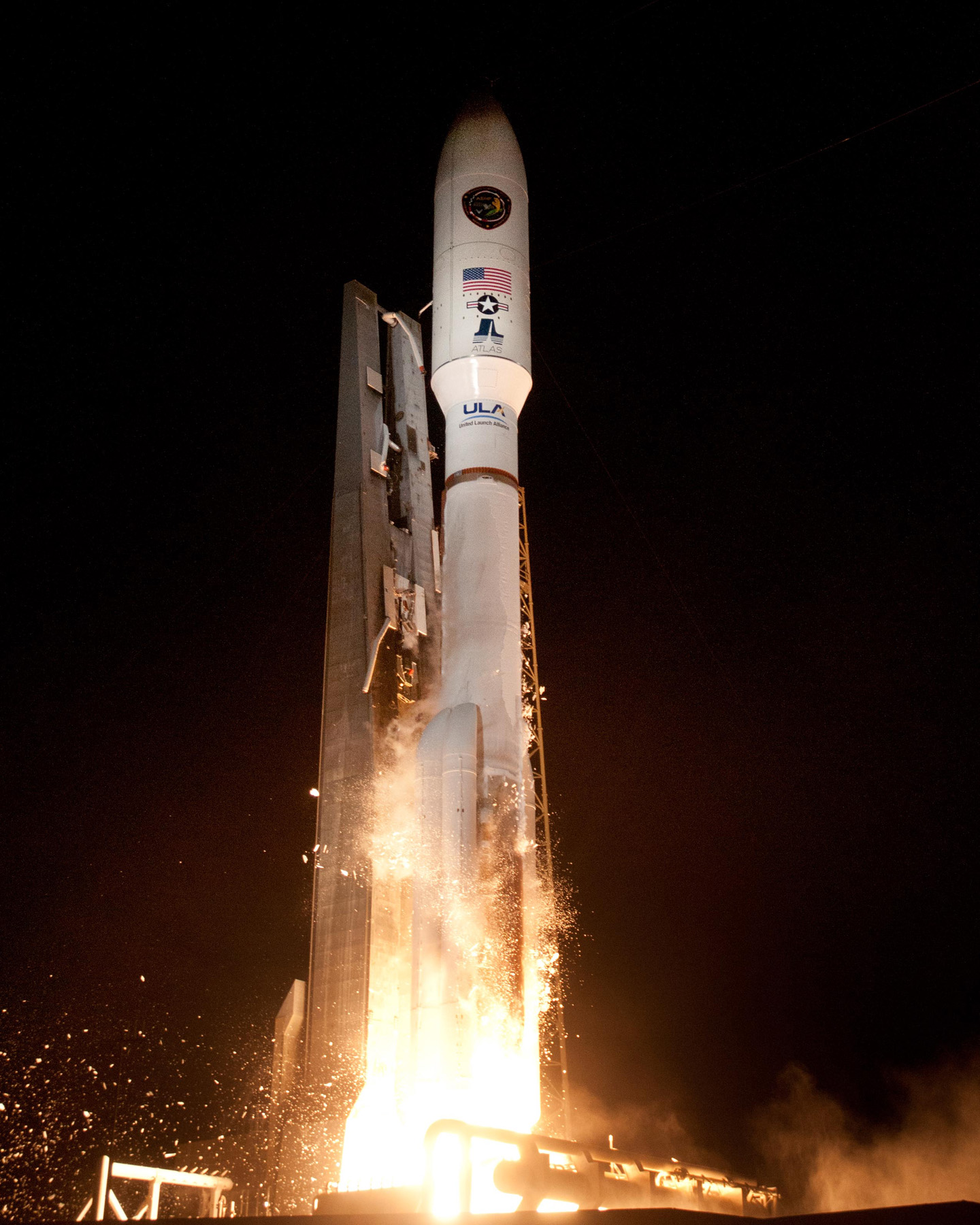US Air Force Launches Advanced Communications Satellite

WASHINGTON — The third in a series of highly secure U.S. military communications satellites successfully launched in the early morning hours of Sept. 18 aboard a United Launch Alliance (ULA) Atlas 5 rocket from Cape Canaveral Air Force Station, Fla.
The rocket launched at 4:10 a.m. local time and the Advanced Extremely High Frequency (AEHF)-3 satellite separated from the vehicle about 51 minutes later. AEHF-3 faces 110 days of orbit-raising operations and 60 days of testing, according to a U.S. Air Force press release.
Lockheed Martin Space Systems of Sunnyvale, Calif., is building a total of six AEHF satellites under a contract worth an estimated $9 billion or more, including associated ground systems. When fully deployed, the AEHF constellation will consist of four satellites in geostationary orbit and secure communications payloads hosted aboard classified satellites in polar orbit. [Gallery: Declassified US Spy Satellite Photos & Designs]
“AEHF is functioning well in tests, and allies are connecting to the system for the first time. It shows that our product is meeting mission needs, and we have room to expand capacity for both tactical and strategic users in the future,” Mark Calassa, vice president of protected communication systems at Lockheed Martin, said in a statement.
Northrop Grumman Aerospace Systems of Redondo Beach, Calif., provides the satellites’ communications payloads.
“The sophistication of this payload will provide users with literally millions of options for countering various enemy electronic, cyber and physical threats,” said Stuart Linsky, vice president of communication programs for Northrop Grumman Aerospace Systems.
The first satellite in the constellation, AEHF-1, was launched in August 2010 but took more than a year to reach its operational orbit due to a propulsion glitch. AEHF-2 joined AEHF-1 in orbit in May 2012.
Get the Space.com Newsletter
Breaking space news, the latest updates on rocket launches, skywatching events and more!
The satellites are designed to provide assured and highly secure communications links under all conditions, including a nuclear war. One AEHF satellite provides more capacity than the entire legacy Milstar constellation. Currently, the satellites are used by Canada and the Netherlands in addition to the United States.
The fourth AEHF satellite is expected to launch in 2016 or 2017, Air Force officials have said. Satellites four, five and six are on schedule, according to a Sept. 18 press release from Lockheed Martin.
The Atlas 5 configuration used in the launch featured a 5-meter payload fairing supplied by Ruag Space of Europe and three solid-fueled strap-on boosters provided by Aerojet Rocketdyne of Sacramento, Calif. The Atlas 5, one of two rockets built by Denver-based ULA, is used primarily for U.S. government missions but launches the occasional commercial satellite.
“Today’s successful launch was the 75th since ULA was formed nearly seven years ago, the 40th Atlas 5 mission, and the fourth ULA launch in the last six months,” Jim Sponnick, ULA vice president of Atlas and Delta programs, said in a prepared statement. ULA is a Boeing-Lockheed Martin joint venture.
This story was provided by Space News, dedicated to covering all aspects of the space industry.
Join our Space Forums to keep talking space on the latest missions, night sky and more! And if you have a news tip, correction or comment, let us know at: community@space.com.
Mike Gruss is a veteran defense reporter and Editor-in-Chief of Sightline Media Group, which includes Army Times, Air Force Times, Dense News, Military Times and Navy Times. From 2013 to 2016, Mike served as a Senior Staff Writer for SpaceNews covering national security space programs and military space policy in the U.S. Congress. Mike earned a bachelor's degree in English and American Studies from Miami University and has previously wrote for the Journal Gazette in Fort Wayne, Indiana and the Virginian-Pilot in Virginia before joining SpaceNews. Prior to joining Sightline in 2017, he was a senior editor of FedTech magazine covering technology in federal government. You can see Mike's latest project on Twitter.










